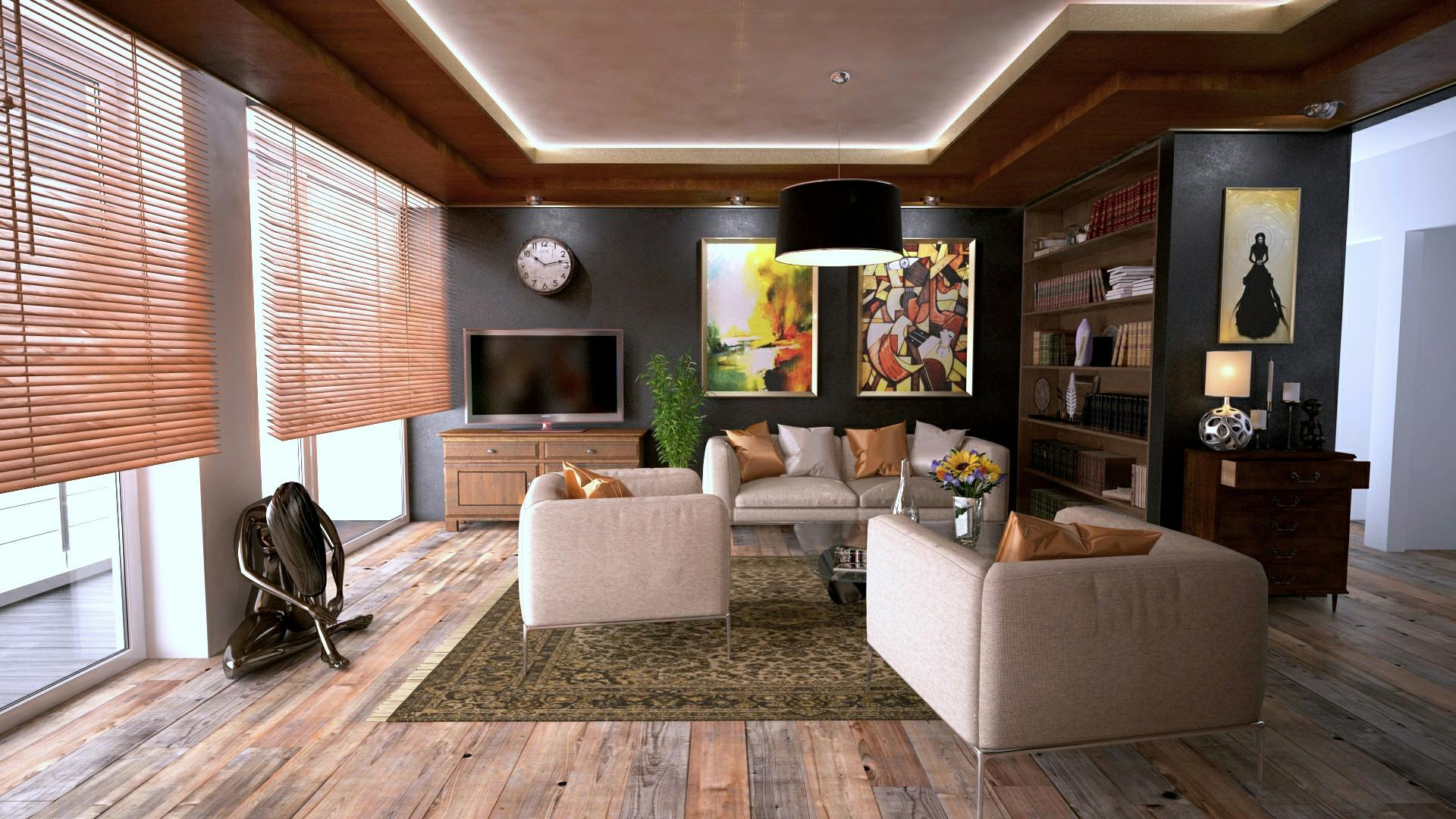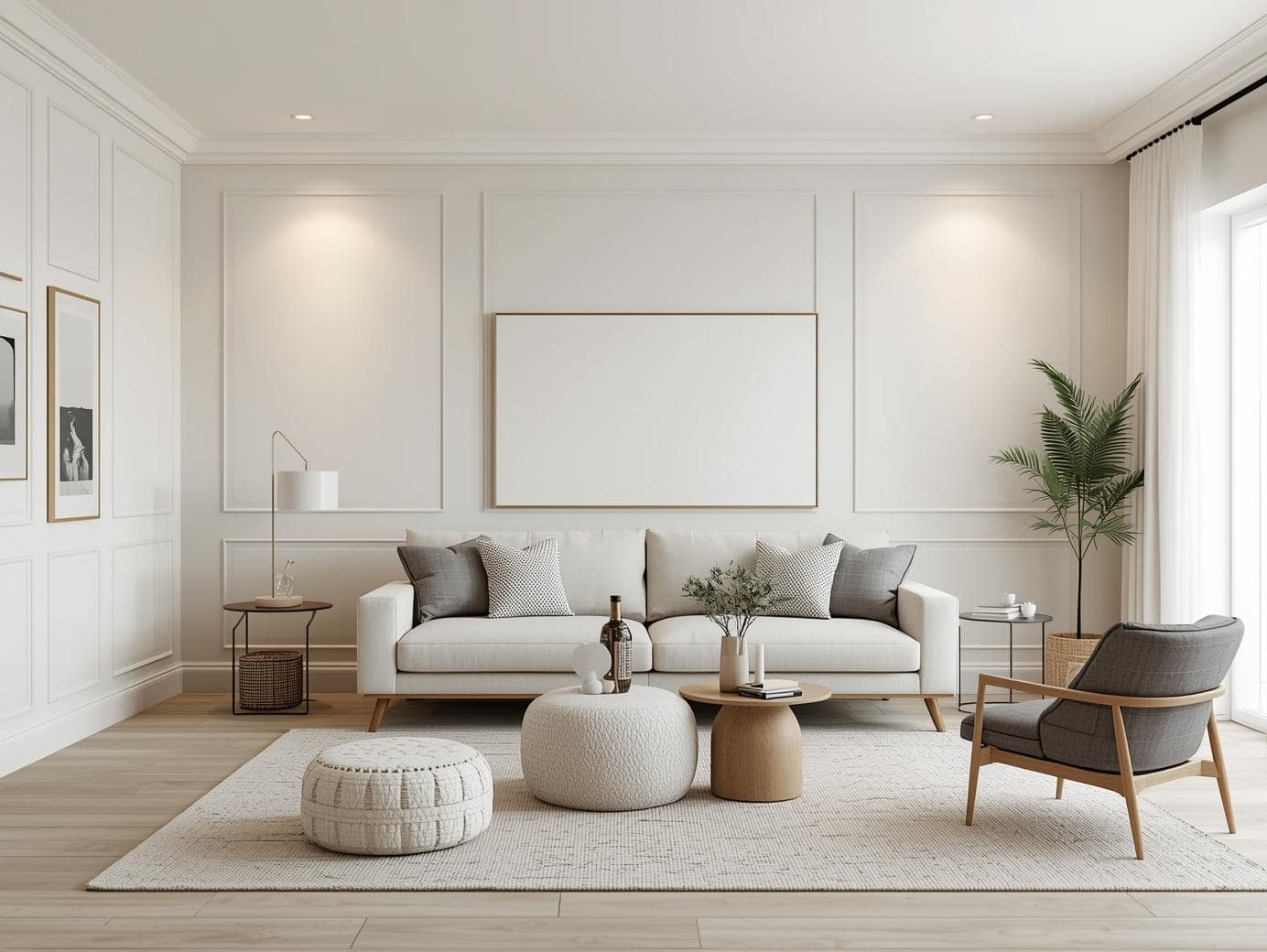Interior Design Texture – When it comes to interior design, mixing textures is an art that transforms a space into a cozy yet elegant retreat. By layering different materials, finishes, and fabrics, you can add depth, warmth, and sophistication to any room. Whether you’re designing a living room, bedroom, or dining area, mastering the balance of textures is key to achieving a well-curated aesthetic. Here’s how to do it effectively.
1. Interior Design Texture – Start with a Neutral Base
A neutral color palette serves as a versatile backdrop for incorporating layered textures.. Soft whites, warm beiges, and subtle grays create a versatile backdrop that allows various textures to stand out without overwhelming the space. Neutral tones also contribute to an elegant and timeless look, making it easier to introduce new elements over time.
2. Layer Different Fabrics
Incorporating multiple fabric types enhances comfort and visual interest. Consider combining plush velvet sofas with linen throw pillows, wool rugs, or cotton drapes. This contrast in textures makes a space feel rich and inviting. Additionally, using different textiles in the same color family can create a cohesive look while still adding variety.
3. Incorporate Natural Elements
Wood, stone, and rattan bring warmth and authenticity to any design. A wooden coffee table, marble countertops, or wicker chairs introduce a tactile experience that adds character and depth to the space. Mixing raw materials with refined ones—such as pairing a rough-hewn wooden bench with a sleek glass table—can create a beautiful balance between rustic and modern aesthetics.
4. Mix Smooth and Rough Surfaces
Balance is key when mixing textures. Pair smooth, glossy surfaces like glass or polished metals with rougher elements such as exposed brick or distressed wood. This contrast creates an engaging interplay that prevents the space from feeling too uniform or flat. Textured wallpaper or plastered walls can also add an extra dimension without the need for additional décor.
5. Use Layered Rugs
Rugs are a great way to introduce texture underfoot. Layering a jute rug with a soft, patterned area rug can create a cozy, inviting atmosphere while adding dimension to the room. This technique works particularly well in large spaces, helping to define different zones and bring warmth to areas with hard flooring.
6. Play with Metallic Accents
Incorporate metallic finishes like brass, gold, or matte black through light fixtures, mirrors, or decor accessories. These elements add a touch of sophistication and reflect light, enhancing the overall elegance of the space. A metallic-framed mirror or brushed gold cabinet handles can subtly elevate a room’s design while maintaining a cozy feel.
7. Include Textured Wall Treatments
Shiplap, wallpaper, and textured paint can enhance the depth of your space. Even a subtle wainscoting or decorative molding can add an extra layer of interest to walls without being overpowering. Faux brick panels or 3D wall tiles are also great ways to introduce texture while keeping the space visually engaging.
8. Mix Textured Accessories
Small decorative elements can make a big impact. Consider adding woven baskets, ceramic vases, knitted throws, or embroidered cushions to your space. These pieces not only provide texture but also help personalize your home, making it feel more lived-in and inviting.
9. Don’t Forget Greenery
Plants bring life and texture to any space. Whether it’s a large potted fiddle leaf fig or a cluster of small succulents, greenery enhances the coziness and freshness of your design. Adding plants with varying leaf textures—such as broad monstera leaves and delicate ferns—can create a beautiful visual contrast.
10. Balance and Restraint
While layering textures can elevate a space, moderation is essential. An excess of competing elements can create a sense of disorder in a room. Opt for a harmonious blend of soft, hard, smooth, and rough textures to preserve elegance and balance. Ensure that each texture serves a purpose and complements the overall aesthetic rather than clashing with other elements.
Final Thoughts – Interior Design Texture
Mastering the art of mixing textures allows you to create a space that feels both cozy and sophisticated. By thoughtfully combining different materials and finishes, you can achieve a harmonious, inviting, and stylish environment. Whether you’re refreshing a single room or redesigning your entire home, these principles will help you create a space that’s not only visually appealing but also comfortable and functional. Start experimenting with textures today and transform your home into a beautifully curated retreat!




ox8sm2
It is perfect time to make some plans for the longer term and it is time to be happy. I’ve read this put up and if I may just I wish to suggest you some fascinating things or suggestions. Perhaps you could write subsequent articles relating to this article. I desire to learn more issues about it!
Thank you for your sharing. I am worried that I lack creative ideas. It is your article that makes me full of hope. Thank you. But, I have a question, can you help me?
Thanks for sharing. I read many of your blog posts, cool, your blog is very good.
Your point of view caught my eye and was very interesting. Thanks. I have a question for you.